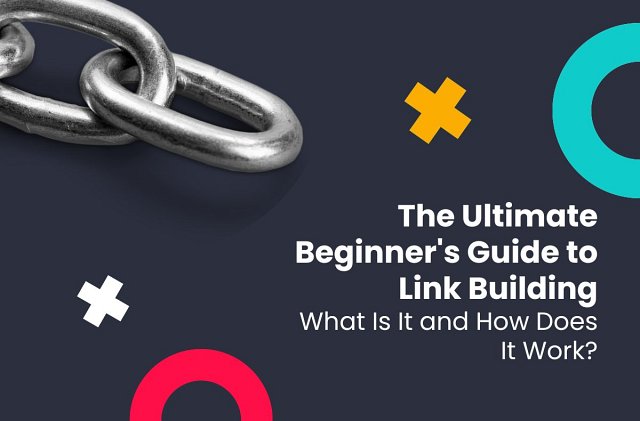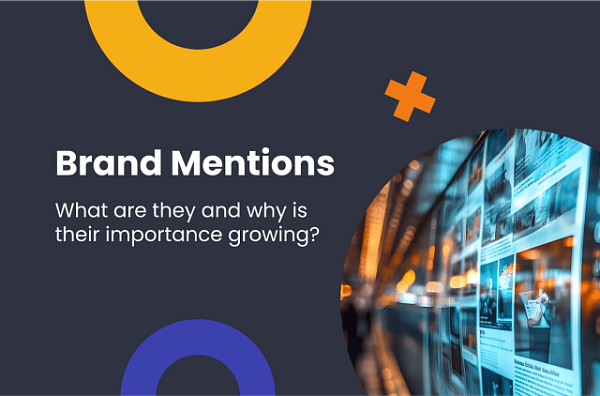(8 min. read)

What is Link Building?
Link building is a fundamental SEO strategy that involves acquiring high-quality backlinks to your website from other websites. In simpler terms, it's about getting other websites to link to yours. Its primary purpose of link building is to enhance your site’s authority and visibility in search engine results.
As you've likely heard, the internet is a network of links between pages, and these backlinks act as votes of confidence. This is indeed accurate – essentially, the more connections that point to a specific page, the more firmly it is anchored in the overall structure. Consequently, the more links from reputable sites that lead to yours, the better your website looks to search engines.
When it comes to backlinks, you might encounter two basic types: dofollow and nofollow links.
- Dofollow Links: These are the standard links that allow search engines to follow them and pass on "link juice." This means they contribute to your site's authority and can positively impact your SEO.
- Nofollow Links: On the other hand, nofollow links contain a specific attribute that tells search engines not to follow the link. They don't give your website a direct boost in search rankings, but they can still drive traffic and enhance your brand visibility.
While dofollow links are more valuable, nofollow links shouldn't be overlooked. They can still drive traffic to your site and help build brand awareness. A natural backlink profile includes a mix of both types.
Another important aspect to keep in mind when actively looking for backlink prospects is anchor text. This is the clickable text in a hyperlink, which plays a significant role in link building as it provides context about the linked page. Descriptive and relevant anchor texts help search engines understand what the linked content is about.
By understanding how search engines view backlinks and how they treat them, you can create a more effective link building strategy. Remember, a natural backlink profile is key, so embrace both dofollow and nofollow links in your efforts.
Why Link Building Matters
Link building is not just a buzzword in the world of SEO; it’s a vital practice that can significantly impact your website's performance.
Backlinks are one of the key factors that search engines like Google use to determine the relevance and authority of a webpage. When a reputable site links to your content, it signals to search engines that your site is trustworthy and valuable. This endorsement can lead to higher rankings in search results.
Link building plays a crucial role in enhancing your domain authority, which is a score that predicts how well a website will rank on search engine results pages (SERPs) - how relevant and authoritative it is for the specific searcher’s query. It’s influenced by various factors, but backlinks are among the most significant. When you actively engage in link building, you increase the number of quality backlinks pointing to your site, which boosts your domain authority over time.
In addition, credible backlinks can lead to more opportunities for partnerships, guest blogging, and collaborations. As your site gains recognition, other content creators may seek to connect with you, further expanding your reach and influence.
Where Backlinks Come From
Backlinks can originate from various sources. Understanding these sources can help you develop a more effective link-building strategy. Here are some key options for acquiring backlinks:
- Adding Links
You can actively add links to various platforms that allow for user-generated content. This includes websites that permit you to create subpages for your business, forums, blogs, and social media platforms. By contributing valuable content and including links to your site, you can enhance your visibility and drive traffic. - Earning Backlinks
Earning backlinks refers to the organic links that are created without your direct influence. These links typically arise when someone recognizes the quality of your work and recommends it to others. Such backlinks are considered the most natural and valuable because they reflect genuine appreciation for your content. While you cannot control this process, consistently producing high-quality content that resonates with your audience is the best way to encourage organic backlinks. - Requesting Links
Outreach is a proactive approach to acquiring backlinks. Sometimes, your content may not achieve visibility on its own, and a little assistance can go a long way. Reach out to website owners or bloggers who might benefit from linking to your resources. A well-crafted email explaining the value of your content can lead to valuable backlinks. - Collaborating for Links
Another effective method to obtain backlinks is through collaboration. By proposing valuable content or partnerships with other businesses or influencers, you can create opportunities for mutual benefit. This could involve guest blogging, co-creating content, or engaging in joint marketing efforts, all of which can lead to backlinks that enhance your online presence.
By exploring these various avenues, you can effectively build a diverse backlink profile that contributes to your website's authority and search engine ranking.
Effective Link Building Strategies
Building a strong backlink profile requires a thoughtful approach. In this section, we’ll explore several effective link building strategies that can help you enhance your website's authority and visibility.
Of course, creating high-quality, shareable content is indispensable for attracting backlinks. If your content is valuable, informative, and engaging, others are more likely to link to it—not only organically, but it will also give you an advantage when actively seeking link building opportunities.
Produce content that may earn links naturally:
- Infographics: Visual content is highly shareable and often linked to by other sites.
- Research Studies: Original research or data can attract links from those referencing your findings.
- How-to Guides: Comprehensive guides provide value and are often linked to as resources.
- Listicles: Curated lists of resources or tips are easy to read and share.
Guest Posting
Guest posting is a popular and effective link building strategy, that involves writing and publishing an article on someone else's blog or website. In return, you typically receive a backlink to your site, along with exposure to a new audience.
Tips for Finding the Right Blogs
- Look for blogs that are relevant to your niche. This ensures that the audience is interested in your content.
- Aim for sites with a higher domain authority. Tools like Moz or Ahrefs can help you assess this.
- Check the blog's engagement levels. Look for sites with active comments and social media shares, as this indicates a responsive audience.
Outreach Strategies
Outreach is another effective and proactive way to acquire backlinks. This involves reaching out to website owners and bloggers to request a link to your content.
You can leverage broken backlinks on competitors' sites. If you find a broken link pointing to a resource that is similar to your content, reach out to the website owner. Inform them about the broken link and suggest your content as a replacement. This technique, known as link reclamation, can be very effective in gaining valuable backlinks.
Effective Outreach Techniques
- Personalization: Always personalize your outreach emails. Mention specific details about their content to show you’ve done your homework.
- Value Proposition: Clearly explain why linking to your content would benefit them. Highlight how it adds value to their audience.
Utilizing Directories and Citations
While directories may not carry the same weight as they once did for search engine rankings, they can still be a valuable component of a well-rounded link building strategy.
Being listed in industry-specific directories or review sites helps establish authority and trust within the market. Adding links to various online platforms is not only beneficial for local businesses but can also provide significant value for larger companies. For instance, having a presence on review sites like G2Crowd or Trustpilot can enhance a company's credibility and visibility, regardless of its size. These platforms allow businesses to showcase customer feedback and ratings, which can attract potential clients and improve search engine rankings.
Moreover, being listed in industry-specific directories or review sites helps establish authority and trust within the market. Larger companies can leverage these platforms to highlight their expertise and customer satisfaction, further solidifying their reputation.
Utilizing Sponsored Content and PR Notes
Another effective approach in marketing that enhances content reach across various channels is the use of sponsored articles and PR notes. These strategies typically involve publishing high-quality content on reputable websites, which broadens your audience exposure and helps achieve multiple marketing objectives.
As such articles are utilized for other marketing efforts, they also offer the added advantage of improving SEO through strategic backlinks. By incorporating links to your website within this content, you not only drive referral traffic but also enhance your site's authority. This dual benefit allows you to maximize your marketing impact while simultaneously supporting your search engine optimization goals.
How to Utilize Sponsored Content for SEO
- Choose Reputable Sites: When selecting sites for sponsored content, prioritize those with high domain authority and relevance to your niche. This ensures that your content is seen by the right audience.
- Create High-Quality Content: Ensure that the content you provide is valuable and engaging. High-quality content is more likely to be shared and linked to by others, further enhancing your SEO efforts.
- Monitor Performance: Track the performance of your sponsored content. Analyze traffic, engagement metrics, and any resulting backlinks to gauge the effectiveness of your strategy.
In summary, effective link building requires a mix of strategies, including guest posting, outreach, creating shareable content, leveraging social media, utilizing directories, and incorporating sponsored content. By implementing these strategies, you can build a robust backlink profile that enhances your website's authority and visibility in search engine results.



